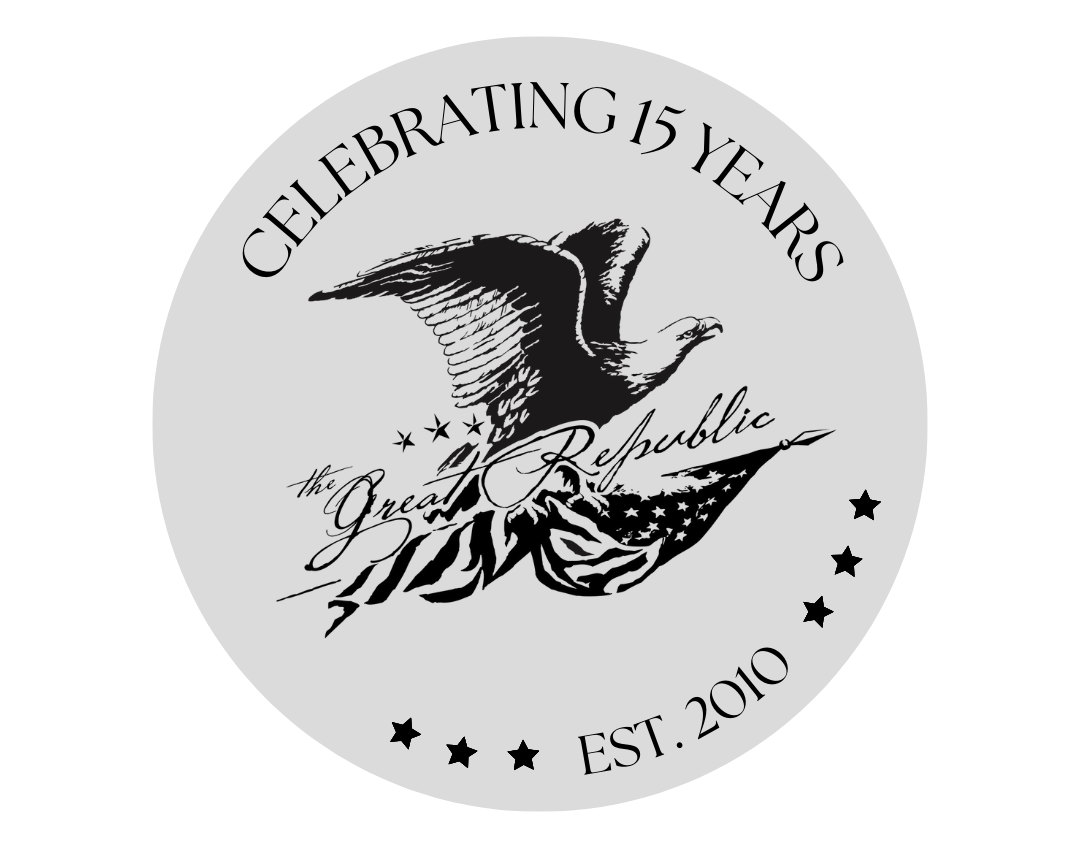2025 Gift Guide: Unique Gifts for the Person Who Has Everything

31-Star Printed American Flag, Celebrating California Statehood, Circa 1850
This rare 31-star silk flag commemorates California’s admission to the Union on September 9, 1850, a milestone following the Treaty of Guadalupe Hidalgo and the Gold Rush at Sutter’s Mill. Featuring a striking “Great Star” canton design, it represents a unique period in American history when the nation rapidly expanded westward. Mounted floating on archival black silk, the flag’s framed display not only protects this remarkable piece of American history but turns it into a striking visual centerpiece, ready for the wall.
This 1819 engraving by John Francis Renault captures the historic British surrender at Yorktown, a pivotal moment that effectively secured American independence in 1781. Renault, a French Army engineer present at the siege, depicted not only the key figures of the battle, including Washington, Cornwallis, Lafayette, and Hamilton, but also layered the scene with rich allegorical symbolism celebrating liberty, justice, and prosperity. As both a firsthand account and a work of art, this print offers a deeply detailed illustration of one of the defining moments of the American Revolution.
Vortic Watch: The Post-War Conversion Watch
This limited-edition Vortic Post-War Conversion Watch transformed an authentic World War II Hamilton military pocket watch into wearable wristwatch, preserving a piece of American history in a modern, functional form. Originally engineered to coordinate critical military operations, these timepieces were later converted to civilian use, embodying the symbolic “swords into plowshares” transformation. Created in a limited edition of 12, each watch showcases the original 1940s Hamilton dial, a high-grade 22-jewel movement, and a hand-finished bronze case, a true celebration of American craftsmanship and a tangible connection to the sacrifices and ingenuity of the World War II era.
This first edition 1796 collection of George Washington’s speeches and correspondence offers a rare and intimate window into the mind of America’s first president and the early republic. From his inaugural address to his Farewell Orders to the Army, the volume reveals Washington’s vision for national unity, civic virtue, and the principles of religious liberty, including his landmark exchange with Newport’s Jewish congregation. Covering his annual messages to Congress, diplomatic insights, and replies to dozens of civic and religious organizations, it captures the challenges and ideals that shaped the young United States.
This two-volume 1710 legal reference, signed by John Jay and inscribed by his son Peter Augustus Jay, is a remarkable piece of American history and an exceptional gift for the collector who has everything. As a young lawyer, Jay annotated these volumes of A Continuation of the Practical Register, a British law dictionary, using them to navigate the legal landscape that shaped the new United States after the Revolution. The books offer insight into early American law and a personal link to one of the nation’s Founding Fathers, who later became the first Chief Justice of the United States.
Vintage "Don't Give Up The Ship" Bellamy Style Eagle
This hand-carved, hand-painted Bellamy-style eagle plaque captures the spirit of American patriotism in stunning detail, with outstretched wings, a turned head, and a Union shield clutched below its body. A banner unfurls above the eagle, boldly inscribed with “Don’t Give Up the Ship” in blue capital letters, echoing the famous 1813 command of Captain James Lawrence.
This beautiful hand-colored 1855 map of New York City by Charles Magnus offers a glimpse into the city’s mid-19th-century landscape, including Manhattan, Brooklyn, Jersey City, and surrounding areas. It highlights streets, parks, important buildings, ferry crossings, canals, and railroads, while also noting universities, public buildings, and places of amusement of the era. The map preserves historical details that have since vanished, such as the New York Lunatic Asylum on the modern site of Columbia University, making it a fascinating artifact for anyone who appreciates the evolving story of New York City.
Thomas Jefferson and James Madison Ship's Passport Signed, November 5, 1804, for "New York Packet"
This extraordinary 1804 ship’s paper is signed by President Thomas Jefferson and Secretary of State James Madison and is a collectible artifact of early American maritime law and international trade. Issued for the New York Packet bound for Bristol, the document officially recorded the ship’s master, cargo, and tonnage, granting legal authorization to navigate foreign waters during a time of international tension. Beyond its practical purpose, it reflects the delicate balance the young United States maintained in asserting neutrality while protecting commerce against privateers and foreign powers. Professionally framed with archival materials, museum glass, and a custom gold leaf plaque, it is a one-of-a-kind piece of Americana capturing the intersection of presidential authority and early trade diplomacy, in America’s formative years.
This signed first edition, first issue of Truman Capote’s Breakfast at Tiffany’s is a literary treasure. Including the Breakfast at Tiffany’s novella and three short stories, it was published by Random House in 1958, in the orange boards and dust jacket as seen here. The novella received glowing reviews. "If you want to capture a period in New York, no other book has done it so well. He could capture a period and place like few others" (Norman Mailer). The novella was quickly adapted for the 1961 hit film starring Audrey Hepburn and George Peppard. A true collectible, perfect for any fan of 20th century literature, Capote, or even Audrey Hepburn!















